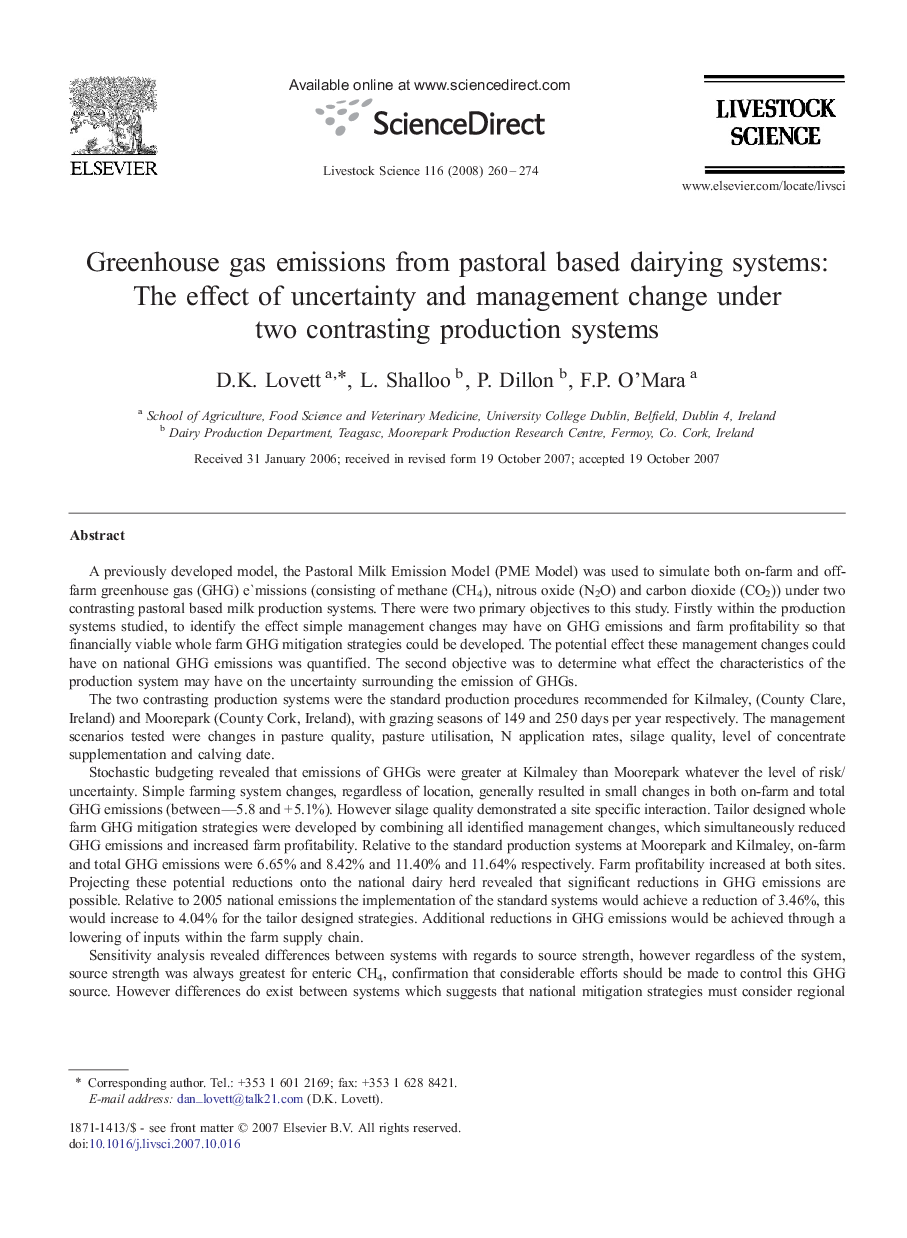| کد مقاله | کد نشریه | سال انتشار | مقاله انگلیسی | نسخه تمام متن |
|---|---|---|---|---|
| 2448430 | 1554017 | 2008 | 15 صفحه PDF | دانلود رایگان |

A previously developed model, the Pastoral Milk Emission Model (PME Model) was used to simulate both on-farm and off-farm greenhouse gas (GHG) e`missions (consisting of methane (CH4), nitrous oxide (N2O) and carbon dioxide (CO2)) under two contrasting pastoral based milk production systems. There were two primary objectives to this study. Firstly within the production systems studied, to identify the effect simple management changes may have on GHG emissions and farm profitability so that financially viable whole farm GHG mitigation strategies could be developed. The potential effect these management changes could have on national GHG emissions was quantified. The second objective was to determine what effect the characteristics of the production system may have on the uncertainty surrounding the emission of GHGs.The two contrasting production systems were the standard production procedures recommended for Kilmaley, (County Clare, Ireland) and Moorepark (County Cork, Ireland), with grazing seasons of 149 and 250 days per year respectively. The management scenarios tested were changes in pasture quality, pasture utilisation, N application rates, silage quality, level of concentrate supplementation and calving date.Stochastic budgeting revealed that emissions of GHGs were greater at Kilmaley than Moorepark whatever the level of risk/uncertainty. Simple farming system changes, regardless of location, generally resulted in small changes in both on-farm and total GHG emissions (between—5.8 and + 5.1%). However silage quality demonstrated a site specific interaction. Tailor designed whole farm GHG mitigation strategies were developed by combining all identified management changes, which simultaneously reduced GHG emissions and increased farm profitability. Relative to the standard production systems at Moorepark and Kilmaley, on-farm and total GHG emissions were 6.65% and 8.42% and 11.40% and 11.64% respectively. Farm profitability increased at both sites. Projecting these potential reductions onto the national dairy herd revealed that significant reductions in GHG emissions are possible. Relative to 2005 national emissions the implementation of the standard systems would achieve a reduction of 3.46%, this would increase to 4.04% for the tailor designed strategies. Additional reductions in GHG emissions would be achieved through a lowering of inputs within the farm supply chain.Sensitivity analysis revealed differences between systems with regards to source strength, however regardless of the system, source strength was always greatest for enteric CH4, confirmation that considerable efforts should be made to control this GHG source. However differences do exist between systems which suggests that national mitigation strategies must consider regional production systems if GHG reductions are to be maximised. This work has also highlighted the need for more data on indirect GHG emissions derived from leached N.
Journal: Livestock Science - Volume 116, Issues 1–3, July 2008, Pages 260–274